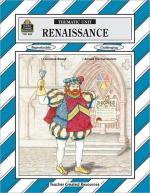|
This section contains 1,391 words (approx. 5 pages at 300 words per page) |

|
Social Distinction. Historians use the term peasant rather than farmer to refer to the villagers of the medieval and early modern era because the latter term implies a greater commitment to the market and less of a commitment to self-sufficiency than was found at the time. Peasants could not avoid participating in the grain market, but their first objective was to produce grain for their own consumption and then to sell only the surplus above what they produced for themselves. If ever there was a group where one would expect to find uniformity in social status and wealth, it would be the peasantry. Indeed, in terms of lifestyle there was not a lot of difference between the most exalted peasant of the village and the poorest, except that the rich peasant might eat a lot more meat than the poor peasant...
|
This section contains 1,391 words (approx. 5 pages at 300 words per page) |

|




